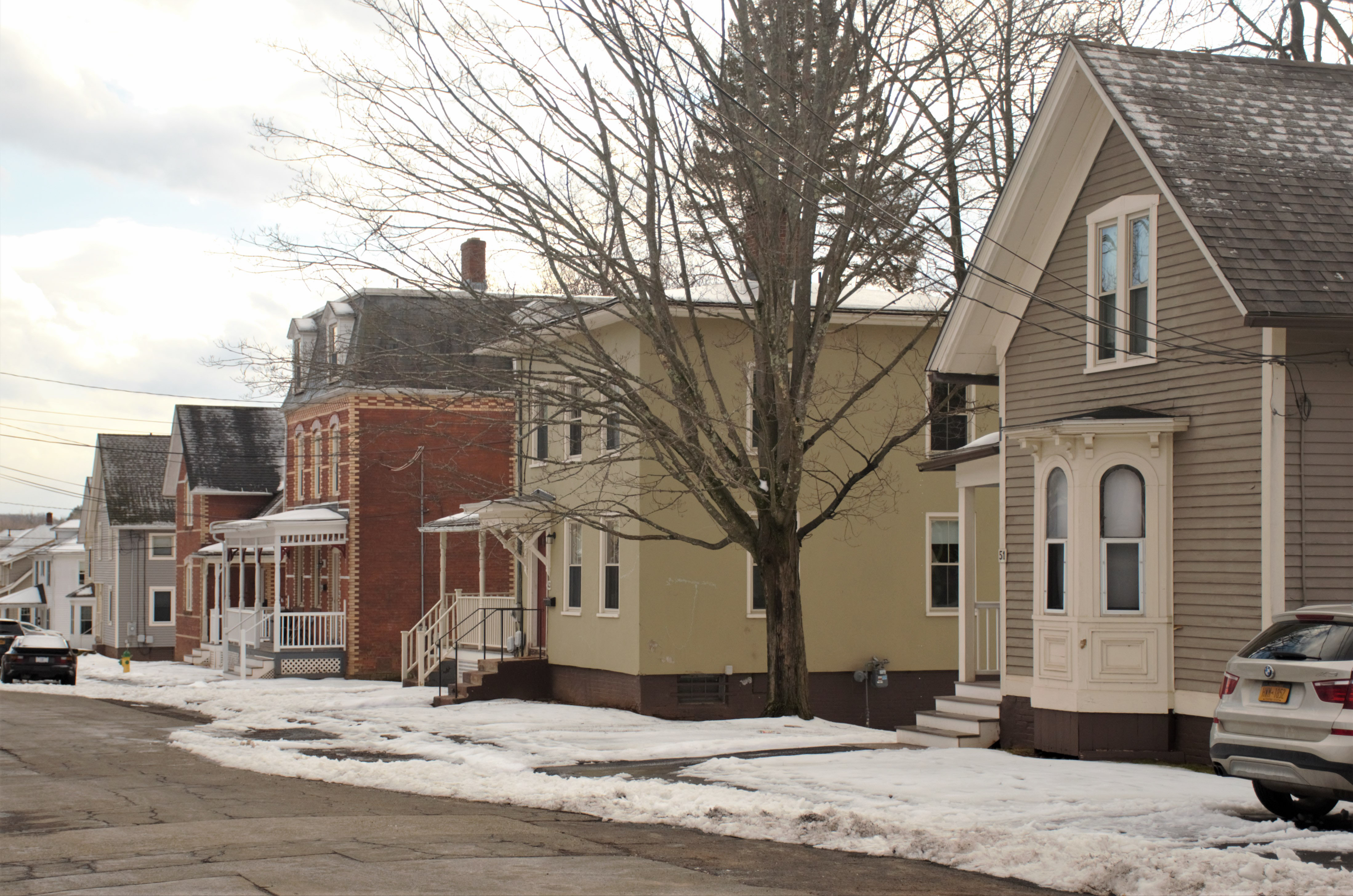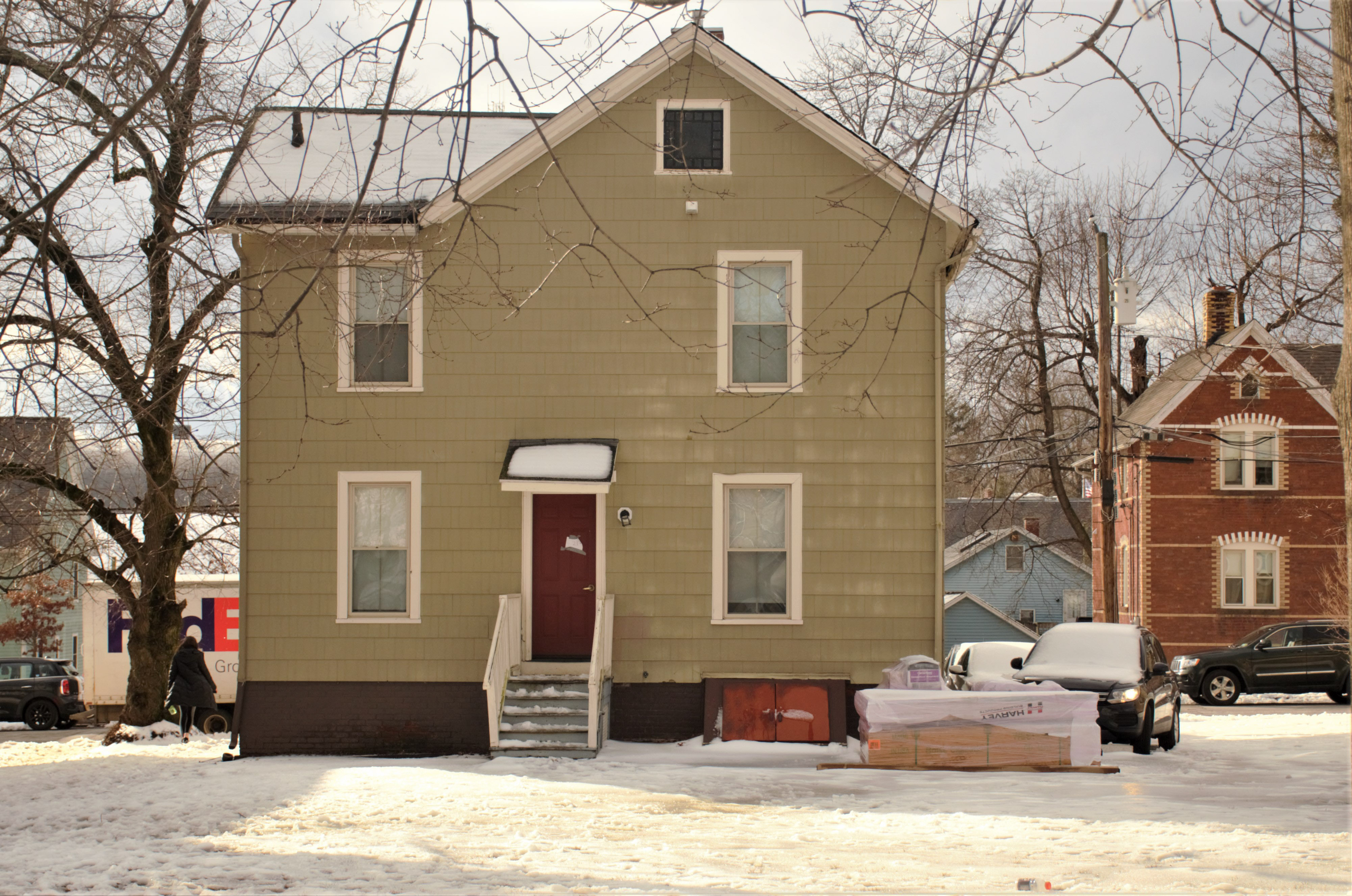
Ben Vuchetich, Staff Photographer
On Feb. 11, wood-frame residents received an email from Director of Residential Life Fran Koerting outlining new consequences for students whose houses are found to be overcapacity, which has reignited concerns over the structural integrity of the University’s housing stock. Koerting’s email follows a series of incidents that have occurred in wood frames since the beginning of the semester.
“Allowing an excess of people into your house jeopardizes their safety as well as compromises the structure of the building,” the email read. “Therefore, from this point on, residents of houses that are found responsible for being overcapacity may be subject to immediate relocation. Due to the limited spaces available this semester, they will likely be assigned to half-empty double rooms in different locations on campus.”
Two weeks ago, the floors of two houses on Warren Street and Cross Street were damaged after residents held gatherings that were allegedly over capacity. The residents of 4 Warren Street, whose floor broke in one of their house’s rooms on the weekend of Feb. 1, are now being held financially responsible for a portion of the damage incurred in their house.
“It seems slightly inappropriate to us that the [University] is holding us liable for damages to a house that has been falling apart for decades,” a resident of 4 Warren told The Argus. “We’ve seen other pieces of evidence that point to the fact that the house is in poor condition. For example, one of our fire alarms went off, but the fire department never showed up, which would suggest to me that it doesn’t work properly. We’ve recently had to replace the heating as well. It feels to me that the University, in putting the blame on us, is somewhat putting bandaids over bullet wounds…. The event was just the tipping point, because I don’t think damage like that takes place all at once.”
These damages have raised a larger question about the structural integrity of the University’s wood frames and program houses. After experiencing several incidents in two different wood frames, Hannah Fritze ’18 expressed a belief that underlying damage is widespread among the University’s residential properties.
“My house was fine to live in, but the degree to which the floors in my senior house were slanted was such that if you had pots or pans on the front two burners of the stove, you had to carefully arrange them so that they didn’t slide to the back burners and leave the front burners on,” Fritze said. “It wasn’t the worst, but it sort of suggested that there was some kind of damage under the floors or in the foundation of the house that was causing the floors to slant.”

Ben Vuchetich, Staff Photographer
Fritze is among numerous alumni, including Jackson Barnett ’18 and Sarah Chen Small ’18, who have been vocal on Twitter about their disagreement with the University’s new relocation policy.
“As a resident of 107 Cross, my house was infested with rats,” Barnett wrote in an email to Koerting. “The situation was not addressed quickly—we heard rats in in our walls for months after reporting the problem to [Physical Plant]. The structural integrity of our house was weakened. I touched the wall going down my staircase once and a literal piece fell out of it. I am convinced that if my three housemates and I jumped too hard in our living room the floor may have caved in…. My time at Wesleyan was life changing and wonderful and I wouldn’t trade it for anything. But my senior year was marred by living in a home that was unsafe, and clearly this trend is continuing into the present.”
Chen Small also wrote to Koerting and the Office of Alumni Relations, condemning the University’s reaction to the recent damages.
“Given that gatherings in houses are a normal and expected part of college life (and just life), it is extremely negligent and dangerous that the [University] has not repaired the crumbling houses,” Chen Small wrote. “[The University] cannot cover up this failing by blaming students for gravity and normal human behavior…. I work in government where we are seeing great success with diversion and harm reduction methods rather than severe punishment. Diversion could include improving the availability of large student-run social venues so that students don’t have to resort to small houses for events.”
In a response to the concerns of several alumni, Koerting acknowledged the impact that restrictions on larger venues have had on campus social life, but she insisted that the aim of the new policy has the students’ best interests in mind.
“Allowing gatherings in the [wood frames] to exceed the capacity that has been calculated by the fire code would be irresponsible and negligent on the part of the [University],” Koerting wrote. “I am not blaming [students] for the lack of structural integrity, just for blatantly disregarding the policies meant to protect them.”
As the residents of 4 Warren noted, however, the official capacity of their wood frame was extremely low, and to use overcapacity as an explanation for the damage would be to deflect the real problem.
“The house is falling apart, one way or another, so trying to restrict the number of people who enter it to [the official capacity of] 13 seems to be avoiding the issue…,” a resident of 4 Warren said. “We didn’t have more than 20 people in the room at the time the floor collapsed.”
The two houses that recently experienced damages are a five-person house with an official capacity of 24 people, and 4 Warren, a four-person house. These capacities, based on the square footage of common spaces, are put in place by the Middletown Fire Department to ensure residents’ safety. However, the Connecticut Fire Code, in conjunction with international standards, states that as long as all other fire safety standards are met for the modified occupant load, the standard occupant load for a residential building—one person per 200 square feet—may be temporarily reduced to one occupant per seven square feet of available floor space, meaning residents did not necessarily violate the fire code.
The Middletown Fire Department was not available for comment on the way in which wood-frame capacities are determined, nor were they available for comment on whether fire safety standards in wood frames would be sufficient to allow for modified capacities.
While the Office of Residential Life has published fire safety capacities for all wood frames, it has not published floor load capacities for any residences, making it difficult to assess how many people each residence’s floors should be able to support.
This is not the first time the University has tried to implement policies to restrict capacity limits. In 2016, the University announced that program housing would no longer be allowed to host more than three concerts per semester, citing the possibility for damage as part of the logic behind the new rule.
“When HMs and CAs asked about the initial reasoning for the ban, their supervisors said that the decision was made not only to protect furniture acquired over the summer in certain houses from ‘jumping’ that might occur at future concerts/parties, but also because the frequency and/or theme of some concerts/parties represented a stray from certain houses’ stated missions,” a 2016 report from Wesleying explained.
These regulations faced similar pushback, which resulted in the publication of an anonymous letter approved by a group of over 30 residential advisors, house managers, and student ResLife staff members. While a compromise was negotiated, the new policy led to a reduction in large social events at program houses.
“For the University to blame damages on the student body seems highly unfair…because they’ve taken away all their social spaces on campus,” a resident of 4 Warren said. “So when people try to have social events in the singular spaces that are allowed—houses—and something goes wrong, trying to hold students accountable for that seems somewhat unjust…. I mean, there’s a lot of evidence that the properties are not in the best condition, and that the University is somewhat willing to neglect it. I think that the student body, as a whole, is willing to tolerate that neglect, as long as they’re able to use the spaces they want. A lot of the reason they don’t try to fix everything up is because they are college spaces, but the expectation that comes with tolerating poor properties and unhealthy—and potentially unsafe—living spaces is that you have some amount of freedom to use the space in a responsible, but reasonable way.”
In response to questions about the structural integrity of wood frames and program houses, President Michael Roth ’78 told The Argus that the University stays on top of repairs, evaluating the housing stock each year.
“Every year we do an evaluation of the program houses, our housing stock in general, but with particular attention to the older places, like wood frames and program houses,” Roth explained. “We have a major maintenance budget of many millions of dollars, and so things move up the priority list depending on their condition…. We haven’t had a talk recently, but we probably should have it soon, about replacing more of the wood frame houses with similar independent living structures…. So we do look at opportunities to take a house that’s better to replace than to repair…. It’s a slow process. Some of the old ones are in good shape, some of them are not, so it’s not a one-size-fits-all. But we try to do it in a way that’s almost—not cost-neutral, exactly, but it’s efficient. It’s not about amenities, it’s about efficiency and durability.”
Roth went on to explain that he believes that the damage recently caused to the wood frames is not necessarily due to issues with buildings’ structural integrity, but rather due to students’ negligence.
“When people decide to try to get as many people into a room and jump up and down on the floor to see if it’ll break, I’m not sure what to call that, except stupid,” Roth said. “My understanding is that [floor collapses] happened kind of by accident, and then some students of course, think ‘Oh let’s see if we can make it happen again.’ And it’s very dangerous! Somebody can get hurt. And so it got the attention of the city authorities as well, because these houses are not made for that many people. So we are looking… at the structural integrity of those floors, and… to ensure that houses that can’t safely support more than X number of people don’t actually have more than X number of people very often.”
Erin Hussey can be reached at ehussey@wesleyan.edu and on Twitter as @e_riss.